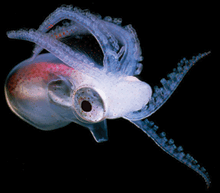 For one of our planned experiments, I want to purify periplasmic uptake DNA away from chromosomal DNA in a clean efficient manner. There are likely several good ways to do this, some of which may be relatively complicated. But purity will be very important for our downstream sequencing plans, so complications are okay.
For one of our planned experiments, I want to purify periplasmic uptake DNA away from chromosomal DNA in a clean efficient manner. There are likely several good ways to do this, some of which may be relatively complicated. But purity will be very important for our downstream sequencing plans, so complications are okay.Nevertheless I did a silly little experiment today to see what kind of size bias our in-house GenElute columns from Sigma have...
The columns are based on DNA adsorption to silica under high salt conditions and elution under low salt. However, larger DNAs will have a difficult time eluting off of the column, even under low salt. That’s why the manufacturer states that the columns are only good up for up to 10 kb fragments.
The DNA I’ll feed to cells will be of a discrete size distribution much smaller than chromosomal DNA, so I simply mixed genomic DNA with DNA size standards and ran them over the column. Here’s the results on a 0.6% gel:
 Lane 1: 1-kb ladder alone.
Lane 1: 1-kb ladder alone.Lane 2: INPUT: MAP7 + 1-kb ladder.
Lane 3: OUTPUT: the input run over a silica column with high salt.
Lane 4: lambda ladder alone.
Lane 5: INPUT: MAP7 + lambda ladder.
Lane 6: OUTPUT: the input run over a silica column with high salt.
Lane 7: MAP7 DNA alone.
It looks like the large genomic DNA fragments were pretty efficiently cleaned away from the smaller ladder fragments. The largest Lambda fragment is ~23-kb, and it seems to have been depleted quite a bit as well. Some smaller sheared genomic is clearly coming through, though, as can be seen when comparing lanes 1 to 3 and lanes 4 to 6.
I don’t think this is really enough size bias for our purposes, but I’m really quite surprised at how well it worked, so maybe I’m just being pessimistic.
I wonder how well this will work in real life. Assuming all our ladder fragments were efficiently taken up by cells into the periplasm, the association of the uptake DNA with the membranes is a major concern. If the uptake DNA is only loosely associated with the membranes, then a standard plasmid mini-prep may very well work quite nicely. Since most of the chromosomal DNA will pellet with the other cellular debris and lysed membranes, the column would then take care of most of the contaminating large molecular weight DNA.
Hmmm... I need some real uptake fragments, so I can try this with cells...

Nice!
ReplyDeleteOur synthetic uptake fragments are only about 200 bp. The fragments we'd use in the experiments could be bigger, right?
The MAP7 DNA was prepared with no attention to protecting it from shearing - it's been vigorously pipetted and probably vortexed. For your experiments the chromosomal DNA would be much bigger because you'd treat the prep very gently.
p.s. If you didn't heat the lambda DNA to 65C before using it, the largest fragment is actually two, 23 kb and 28kb, the latter formed by sticky-end annealing of the 23 and 4.4 kb fragments.
I'd forgotten that about lambda...
ReplyDeleteWe'd ideally use several sizes of uptake input DNA. I'd say 500 bp is the size we should start with. But a large size, say 3 kb would be pretty useful too, but would require us to do some additional downstream processing before we could sequence. Apparently, Solexa is happy with fragments 200 bp - 1 kb, but the larger the fragment, the bigger the cluster, so the fewer total reads per lane you get. Apparently the optimum is somewhere in the few hundred bases range. Or so I hear.
We really do need everything to be in a pretty tight size distribution by the end, as it will apparently make the cluster synthesis more uniform.